Genetically Modified Frogs
Welcome to the fascinating world of genetically modified frogs! Using advanced CRISPR gene-editing technology, private biotech companies have developed various modified frogs with unique characteristics. These scientific innovations showcase the potential of genetic engineering while raising important questions about its applications and ethics.
Note: The genetically modified frogs described on this page are conceptual examples created for educational purposes to illustrate the potential of genetic modification technology. They represent theoretical applications of CRISPR and other genetic engineering techniques.
Fireproof Frog
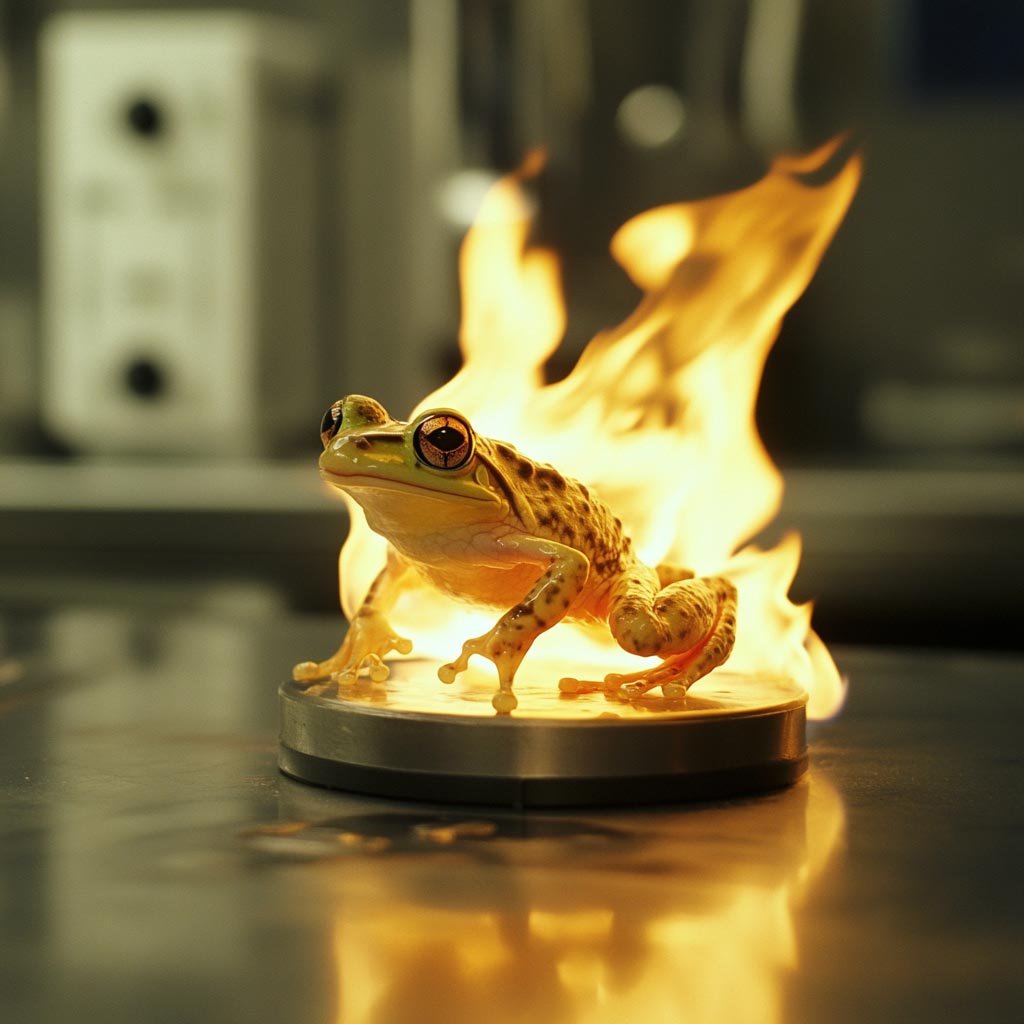
Heat-Resistant Amphibian
The Fireproof Frog is a genetically modified species designed to withstand significantly higher temperatures than natural frogs. Using CRISPR technology, scientists have incorporated genes that produce specialized heat shock proteins (HSPs) similar to those found in extremophile organisms.
Key Modifications:
- Heat Shock Proteins: Enhanced HSP70 production that acts as a "cellular thermometer" to protect cells under extreme heat conditions
- Skin Adaptations: Modified skin structure with additional protective layers that resist drying and heat damage
- Metabolic Adjustments: Altered metabolism that can function efficiently at higher temperatures
These frogs can survive in environments up to 60°C (140°F), temperatures that would be fatal to ordinary amphibians. Their genetic modifications help prevent protein denaturation under heat stress, allowing them to maintain cellular function in extreme conditions.
Research Application: Fireproof Frogs are being studied to understand how organisms might adapt to increasing global temperatures and to develop potential heat-resistant properties for various applications.
Ice Frog
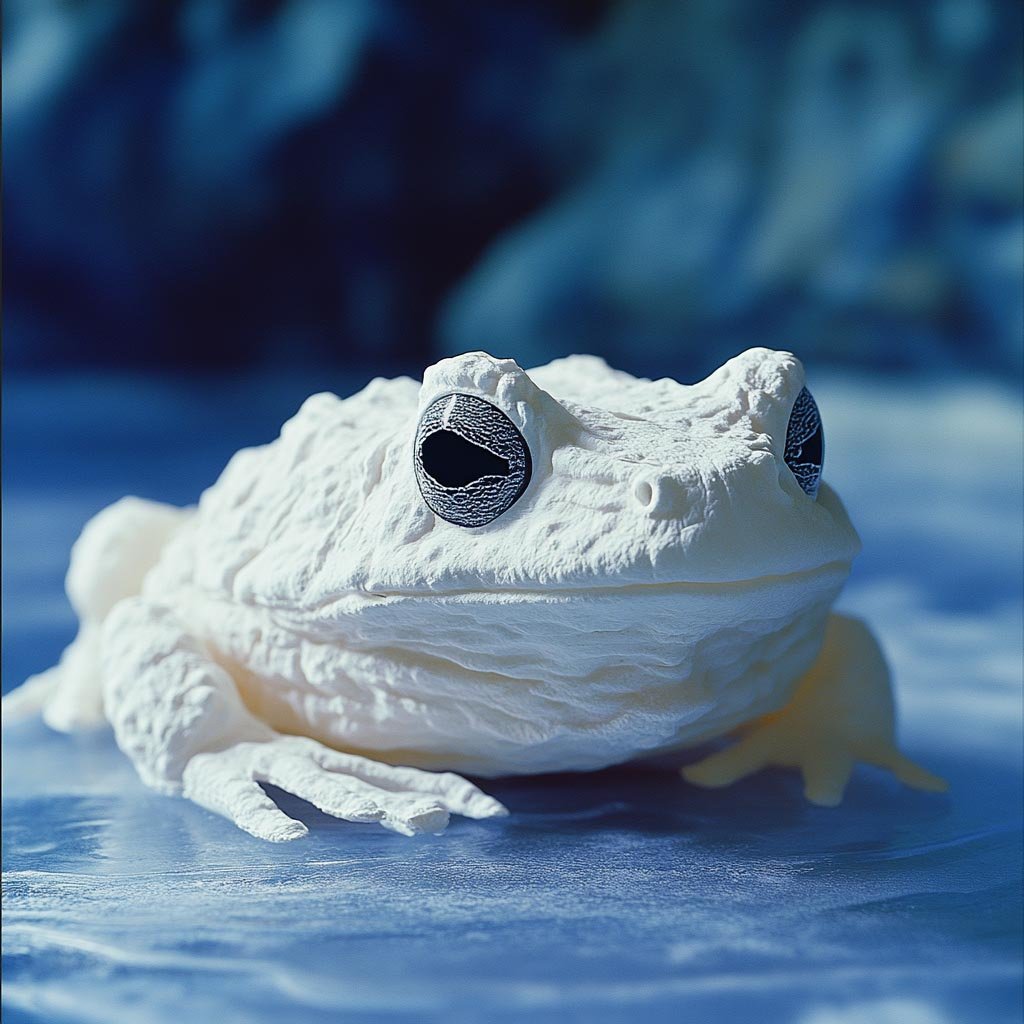
Cold-Resistant Amphibian
The Ice Frog is a genetically modified species created by incorporating antifreeze protein (AFP) genes from Arctic fish and cold-tolerant insects. These modifications allow the frog to survive in extremely cold environments that would normally be fatal to amphibians.
Key Modifications:
- Antifreeze Proteins: Produces specialized proteins that prevent ice crystal formation in tissues
- Metabolic Adaptation: Modified cellular processes that function efficiently at near-freezing temperatures
- Circulatory Adjustments: Enhanced blood circulation system that prevents freezing in extremities
Ice Frogs can survive in temperatures as low as -20°C (-4°F) without tissue damage. Their genetic modifications prevent ice formation in body fluids and maintain cellular function even when environmental temperatures drop well below freezing.
Research Application: Ice Frogs are being studied to develop better cold storage techniques for biological materials and to understand how organisms might adapt to extreme cold environments.
Coral Frog
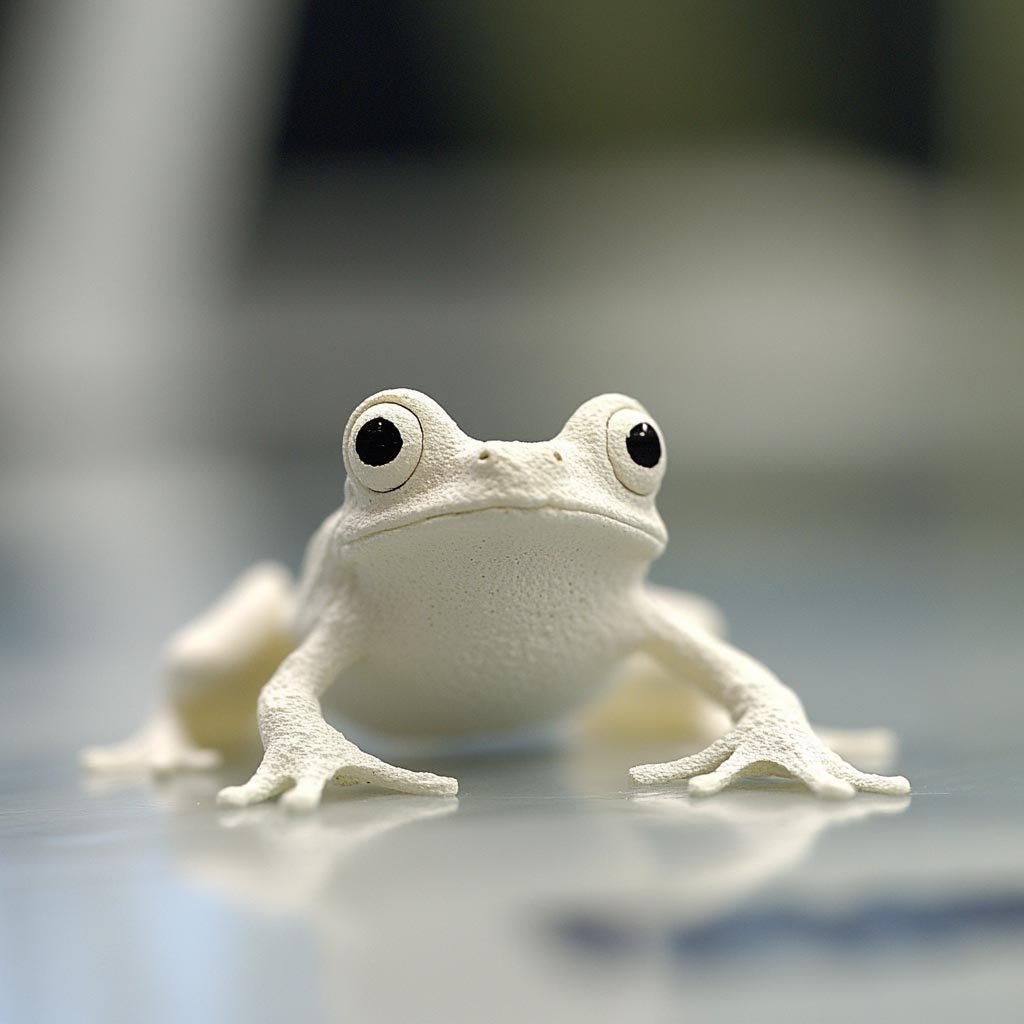
Symbiotic Amphibian
The Coral Frog represents a groundbreaking achievement in genetic modification, incorporating genes from coral species to establish a symbiotic relationship with microalgae similar to the coral-algae symbiosis found in reef ecosystems.
Key Modifications:
- Symbiotic Capability: Modified skin cells can host dinoflagellates from the genus Symbiodinium
- Nutrient Exchange: Developed pathways for exchanging nutrients with symbiotic algae
- Skin Adaptations: Specialized skin structures that provide habitat for symbiotic organisms
Coral Frogs have a unique ability to form mutually beneficial relationships with microalgae. The algae receive shelter and protection, while the frog gains additional nutrients produced through the algae's photosynthesis, enhancing its energy efficiency and resilience.
Research Application: Coral Frogs are being studied to better understand symbiotic relationships and potentially develop new approaches to ecosystem restoration and conservation.
Cloud Frog
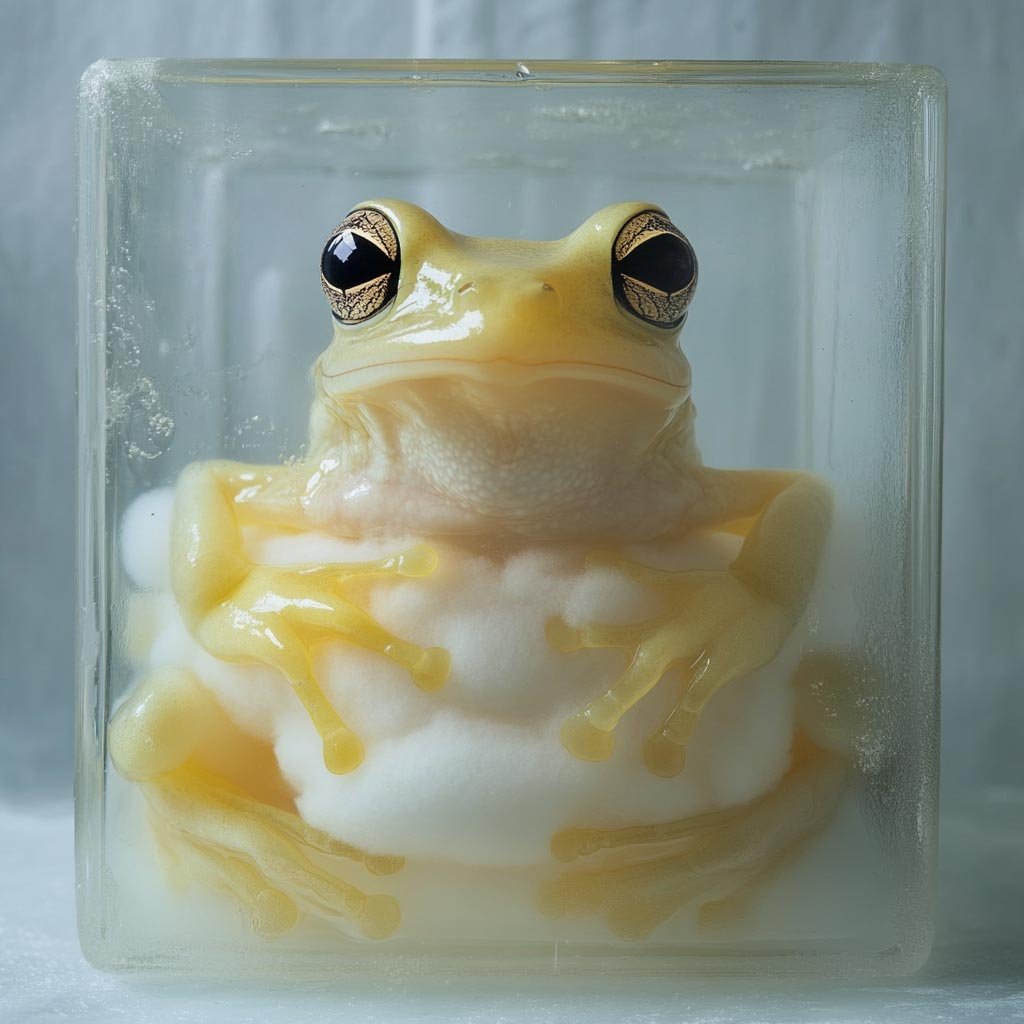
Data-Integrated Amphibian
The Cloud Frog represents the intersection of biological systems and information technology. These genetically modified frogs have been engineered with biological sensors that can collect environmental data and transmit it wirelessly to cloud computing systems.
Key Modifications:
- Biosensors: Modified skin cells that can detect environmental changes including temperature, humidity, and pollutants
- Data Processing: Neural modifications that allow for basic processing of environmental information
- Wireless Communication: Specialized organs that can emit low-power electromagnetic signals
Cloud Frogs function as living environmental monitors, collecting data about their surroundings and transmitting it to research stations. Their unique genetic modifications allow them to serve as biological interfaces between natural ecosystems and digital information systems.
Research Application: Cloud Frogs are being developed as potential environmental monitoring tools that could provide real-time data about ecosystem health and environmental changes.
Glow Frog
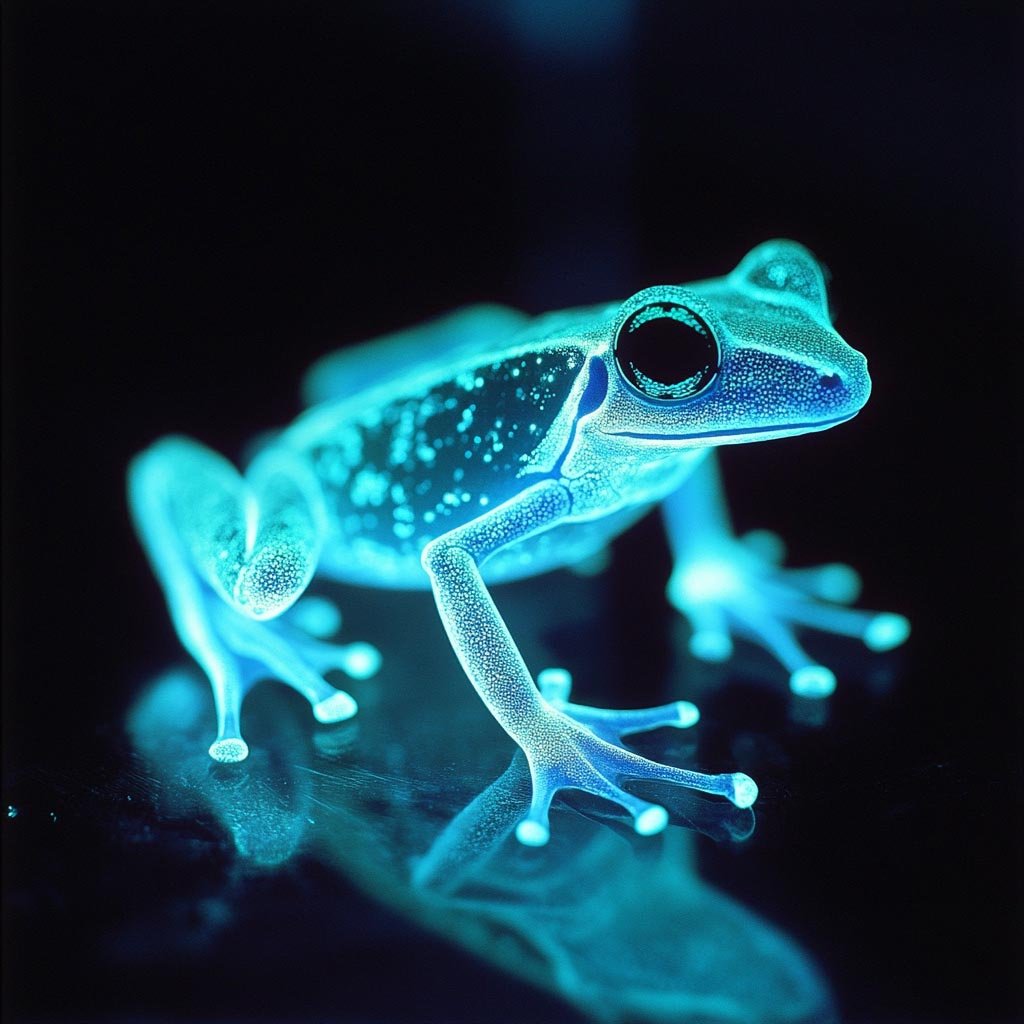
Bioluminescent Amphibian
Glow Frogs are genetically modified amphibians that incorporate genes from bioluminescent organisms like jellyfish and fireflies. These modifications allow the frogs to produce their own light through biological processes.
Key Modifications:
- Bioluminescent Proteins: Produces proteins like Green Fluorescent Protein (GFP) from jellyfish or luciferase from fireflies
- Light Production: Modified skin cells that can generate visible light through chemical reactions
- Control Mechanisms: Neural pathways that allow the frog to control when and where it glows
Glow Frogs can emit light in various colors depending on their specific genetic modifications. Some variants glow continuously, while others can activate their bioluminescence in response to specific stimuli or environmental conditions.
Research Application: Glow Frogs are valuable research tools for tracking gene expression and studying developmental processes, as the glowing proteins can be linked to specific genes to visualize their activity.
Invisible Frog
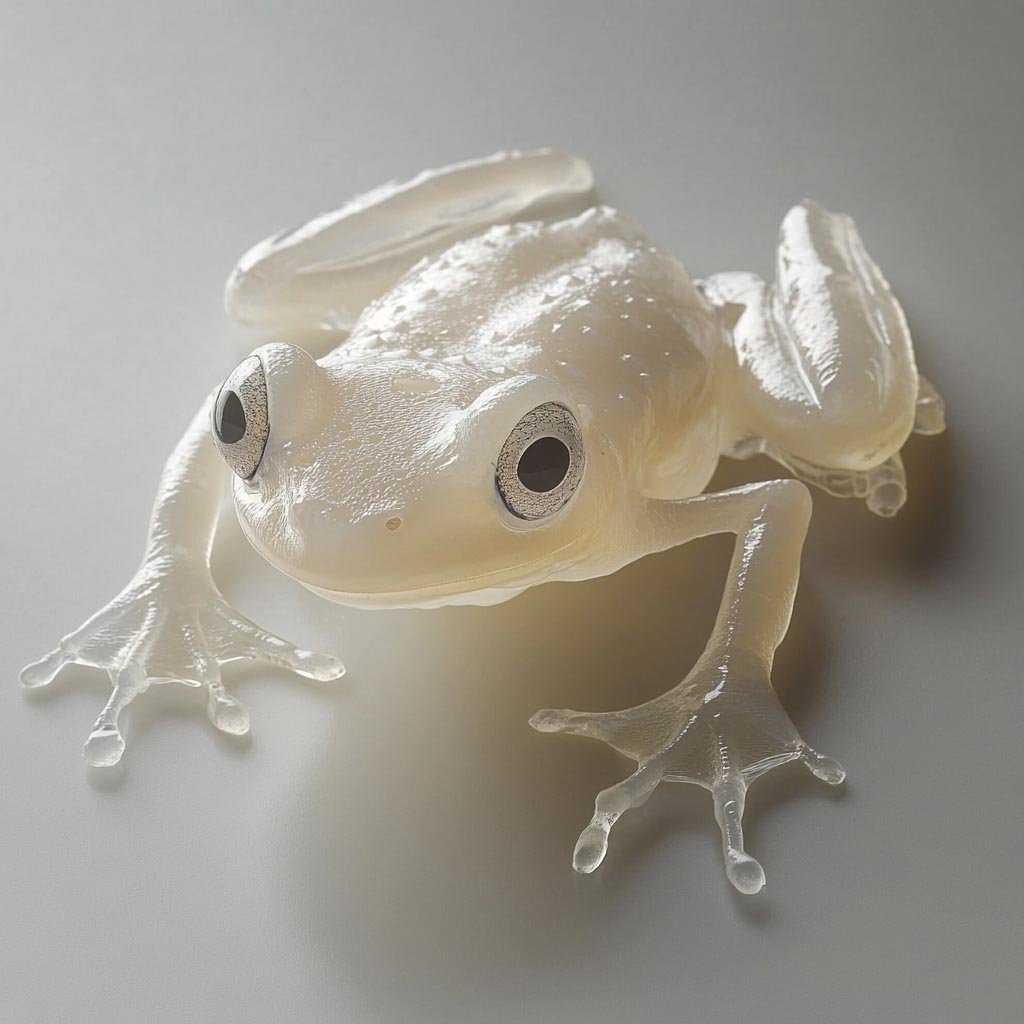
Advanced Camouflage Amphibian
The Invisible Frog represents the pinnacle of adaptive camouflage technology. By combining genes from glass frogs, octopuses, and chameleons, scientists have created a frog with unprecedented camouflage capabilities.
Key Modifications:
- Transparent Tissues: Enhanced transparency in skin and muscle tissues similar to glass frogs
- Chromatophore Control: Advanced pigment cells that can rapidly change color and pattern
- Texture Adaptation: Skin that can modify its texture to match surrounding surfaces
Invisible Frogs can adapt their appearance to match almost any background with remarkable precision. Their skin contains specialized cells that can detect the color and texture of their surroundings and adjust accordingly, making them nearly undetectable in their environment.
Research Application: Invisible Frogs are being studied to develop advanced camouflage technologies and to better understand the biological mechanisms of adaptive coloration.
Oil Frog
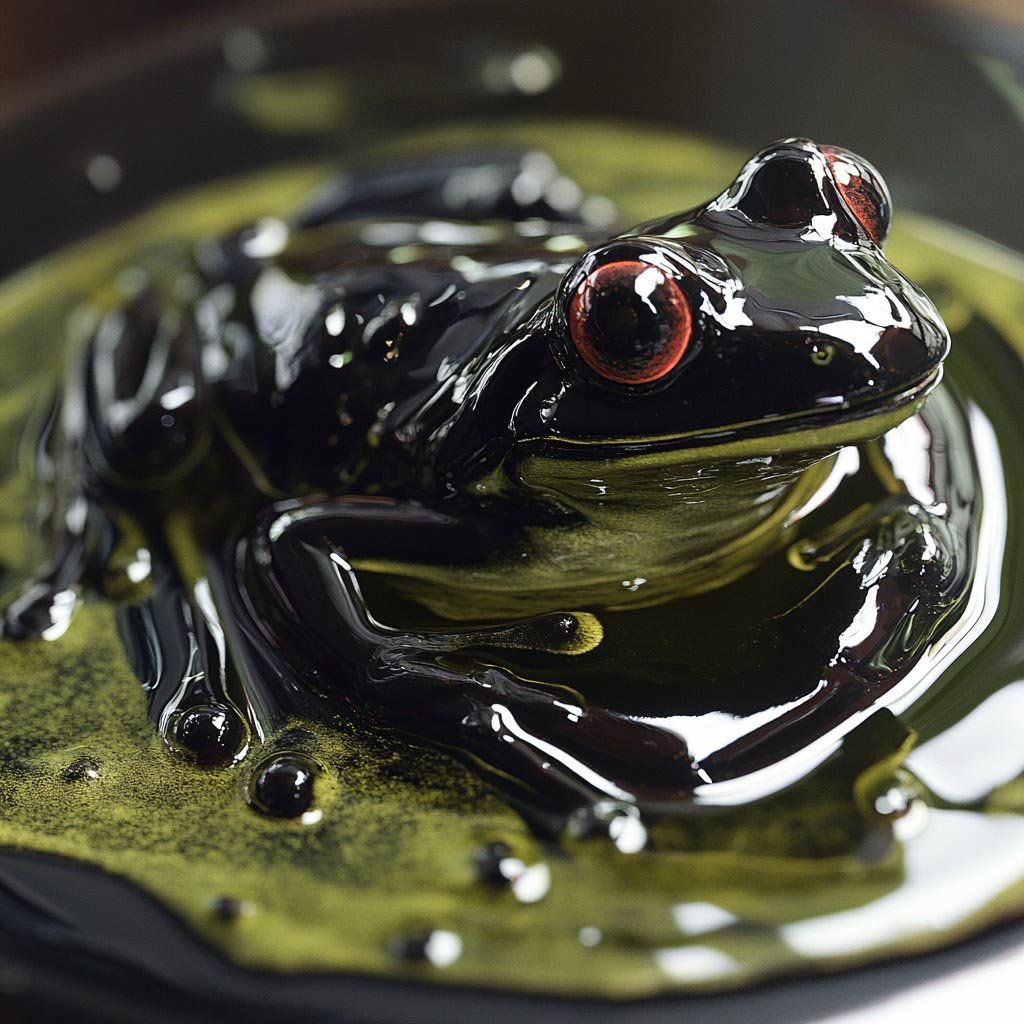
Pollution-Resistant Amphibian
The Oil Frog is a genetically modified species designed to survive in environments contaminated with petroleum products and other pollutants. By incorporating genes from oil-resistant marine organisms, scientists have created a frog that can thrive in conditions that would be toxic to ordinary amphibians.
Key Modifications:
- Oil-Resistant Skin: Modified skin structure with specialized lipids that repel oil and prevent absorption
- Detoxification Systems: Enhanced liver enzymes capable of breaking down petroleum compounds
- Respiratory Adaptations: Modified respiratory system that can filter out airborne contaminants
Oil Frogs can survive direct contact with crude oil and other petroleum products without suffering the toxic effects that would harm ordinary amphibians. Their specialized skin secretes a protective coating that prevents oil from adhering to their bodies or being absorbed through their skin.
Research Application: Oil Frogs are being studied for potential applications in environmental remediation and as biological indicators in polluted environments.
Rock Frog
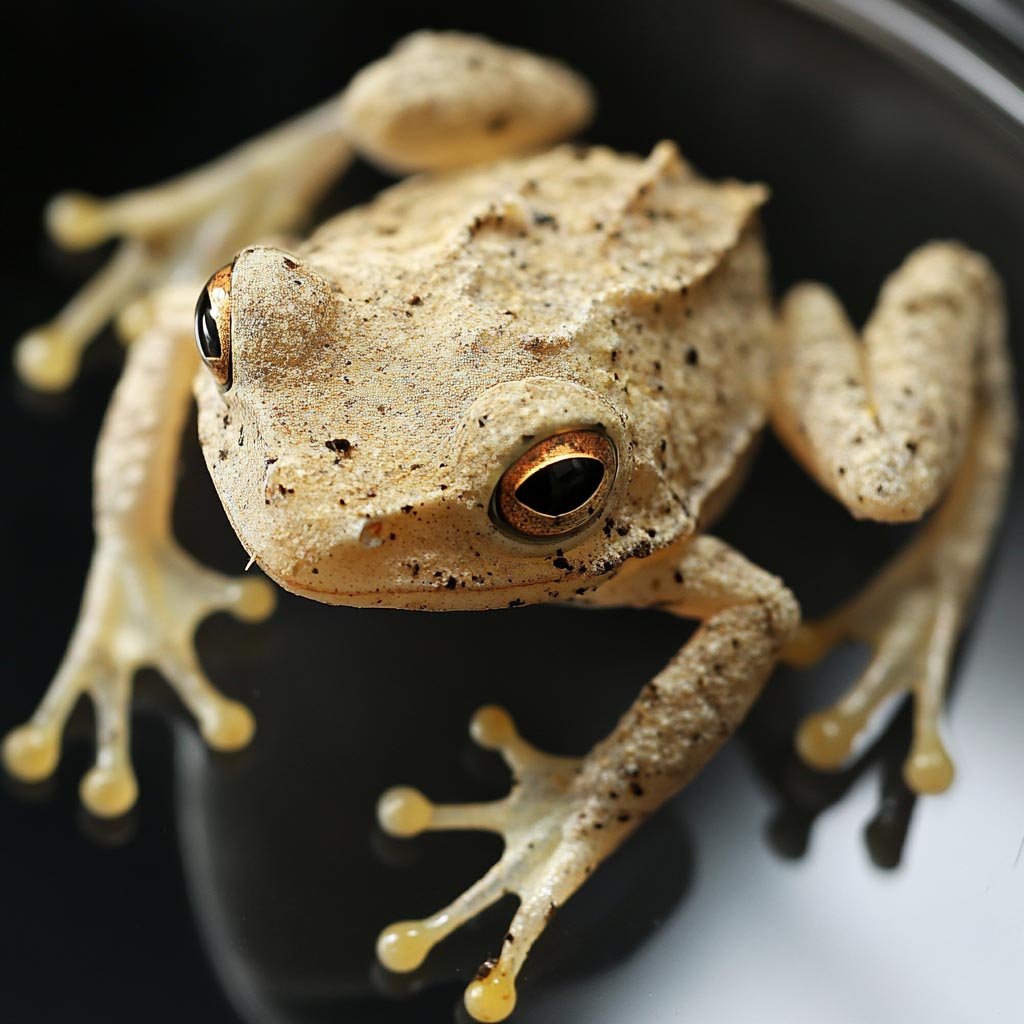
Lithomorphic Amphibian
The Rock Frog is a genetically modified species that takes camouflage to an extraordinary level. By incorporating genes responsible for mineral formation and texture development, scientists have created a frog that can mimic the appearance and texture of rocks with remarkable precision.
Key Modifications:
- Mineral Integration: Modified skin that can incorporate minerals from the environment
- Texture Formation: Specialized cells that can create rock-like textures on the skin surface
- Pattern Recognition: Neural adaptations that allow the frog to match surrounding rock patterns
Rock Frogs can alter their appearance to match the specific type of rock in their environment, from smooth river stones to rough granite. When motionless, they are virtually indistinguishable from actual rocks, providing them with exceptional protection from predators.
Research Application: Rock Frogs are being studied to better understand the biological mechanisms of mimicry and to develop advanced camouflage technologies.
Waterproof Frog
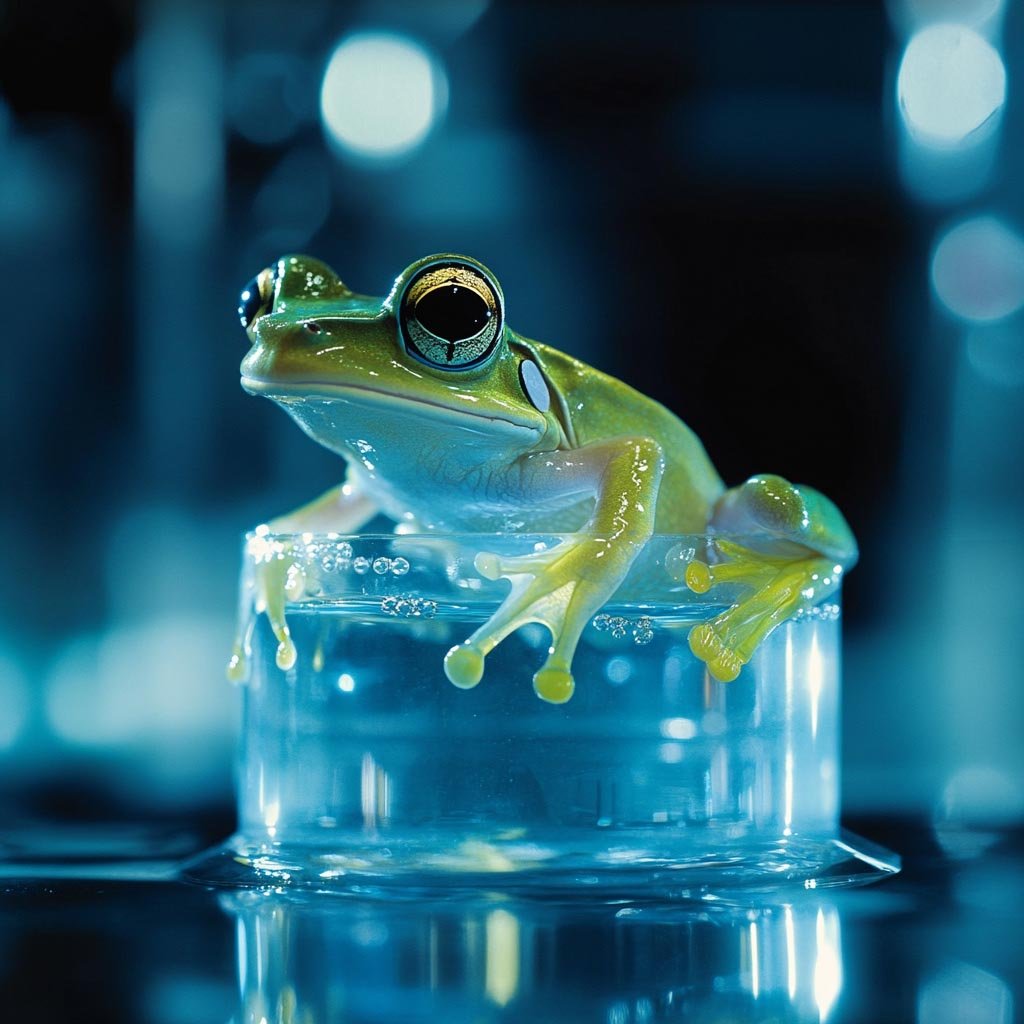
Drought-Resistant Amphibian
The Waterproof Frog is a genetically modified species designed to survive in arid environments where water is scarce. By incorporating genes from desert-adapted animals and water-conserving plants, scientists have created a frog that can retain water with unprecedented efficiency.
Key Modifications:
- Water-Retaining Skin: Modified skin structure with specialized lipids that prevent water loss
- Water Storage: Internal bladder adaptations that can store water for extended periods
- Metabolic Efficiency: Altered metabolism that requires less water for normal function
Waterproof Frogs can survive in dry environments for months without access to standing water. Their specialized skin prevents the evaporation that would normally occur through an amphibian's permeable skin, allowing them to conserve body moisture even in hot, arid conditions.
Research Application: Waterproof Frogs are being studied to better understand water conservation mechanisms and to develop strategies for helping amphibian species adapt to increasingly dry habitats due to climate change.
GM Frog Research Applications
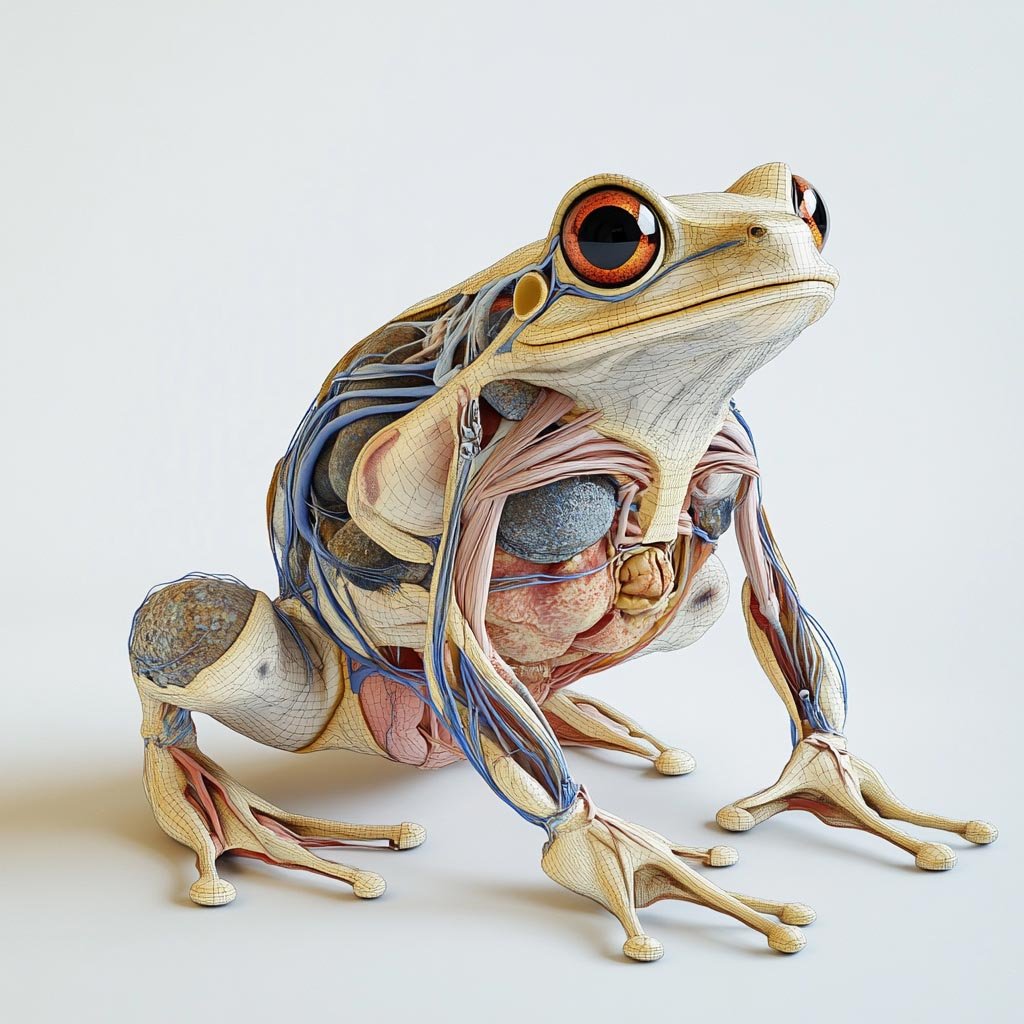
Scientific Breakthroughs
Genetically modified frogs have contributed to numerous scientific fields:
- Developmental Biology: Tracking gene expression during embryonic development
- Medical Research: Testing treatments for human diseases
- Environmental Monitoring: Creating biosensors for pollution detection
- Conservation: Developing resistance to diseases threatening wild populations
- Evolutionary Studies: Understanding genetic adaptations and evolutionary processes
Ethical Considerations
The genetic modification of frogs raises important ethical questions that scientists and society must address:
Benefits
- Advancing scientific knowledge
- Developing medical treatments
- Creating environmental monitoring tools
- Helping conservation efforts
- Reducing the need for other animal testing
Concerns
- Animal welfare considerations
- Potential ecological impacts if released
- Unintended consequences of genetic changes
- Questions about ownership of modified organisms
- Balancing scientific progress with ethical boundaries
Note: The GM frogs shown on this site are conceptual representations for educational purposes. Actual genetic modifications in frogs are typically more subtle and focused on specific research goals.
